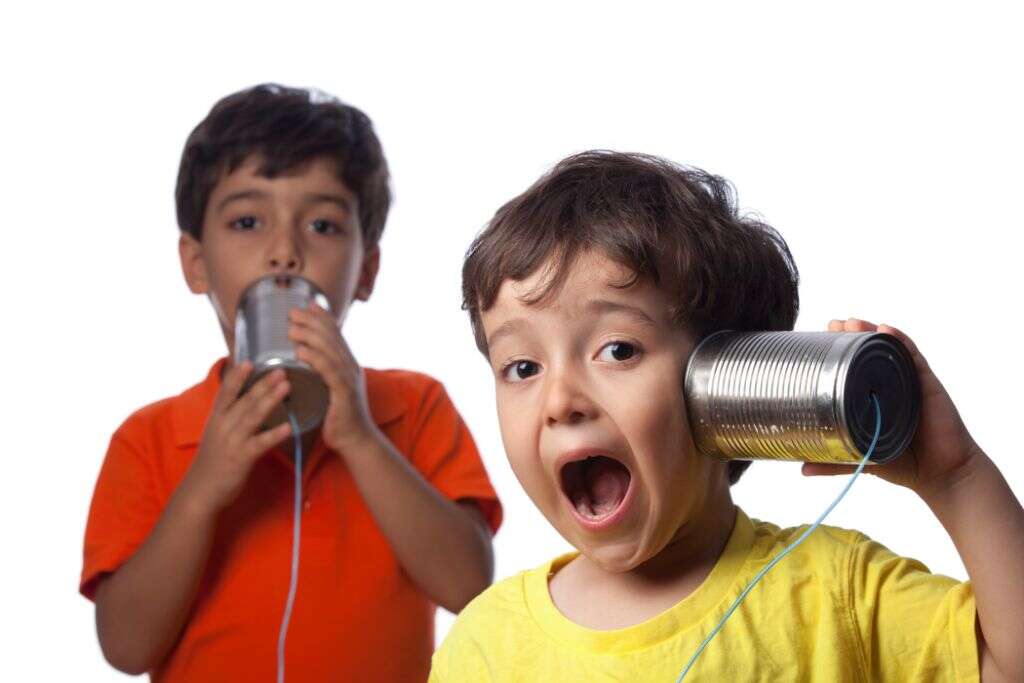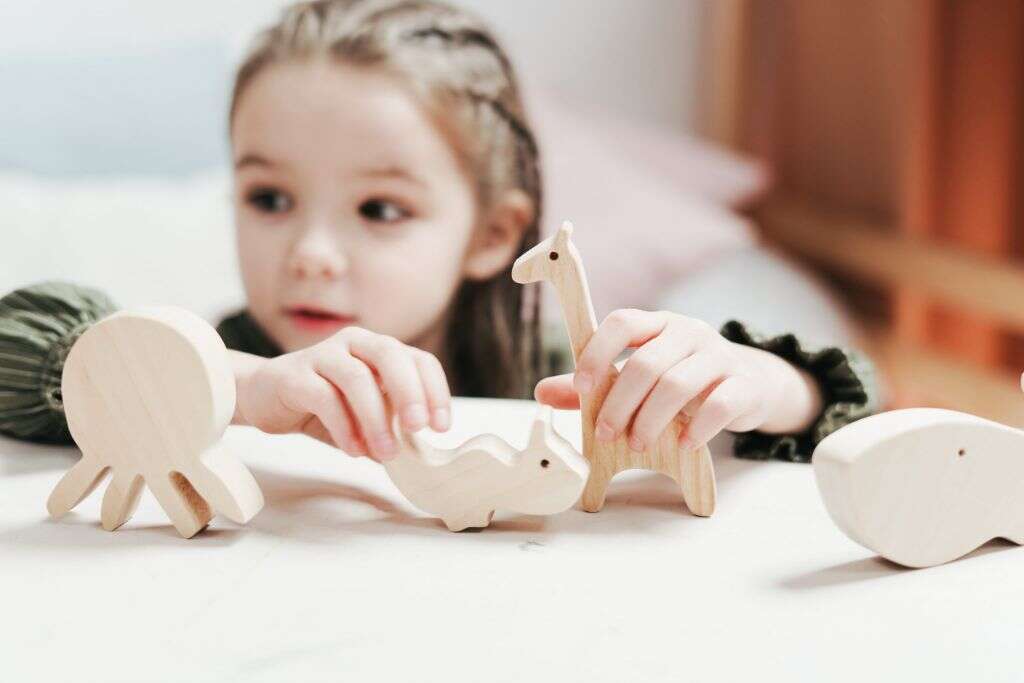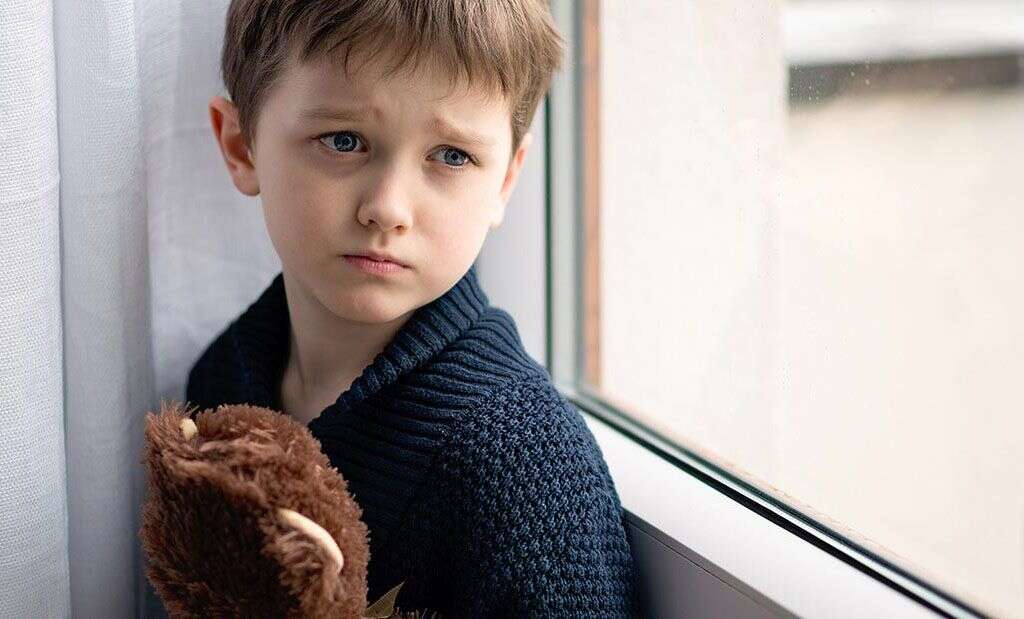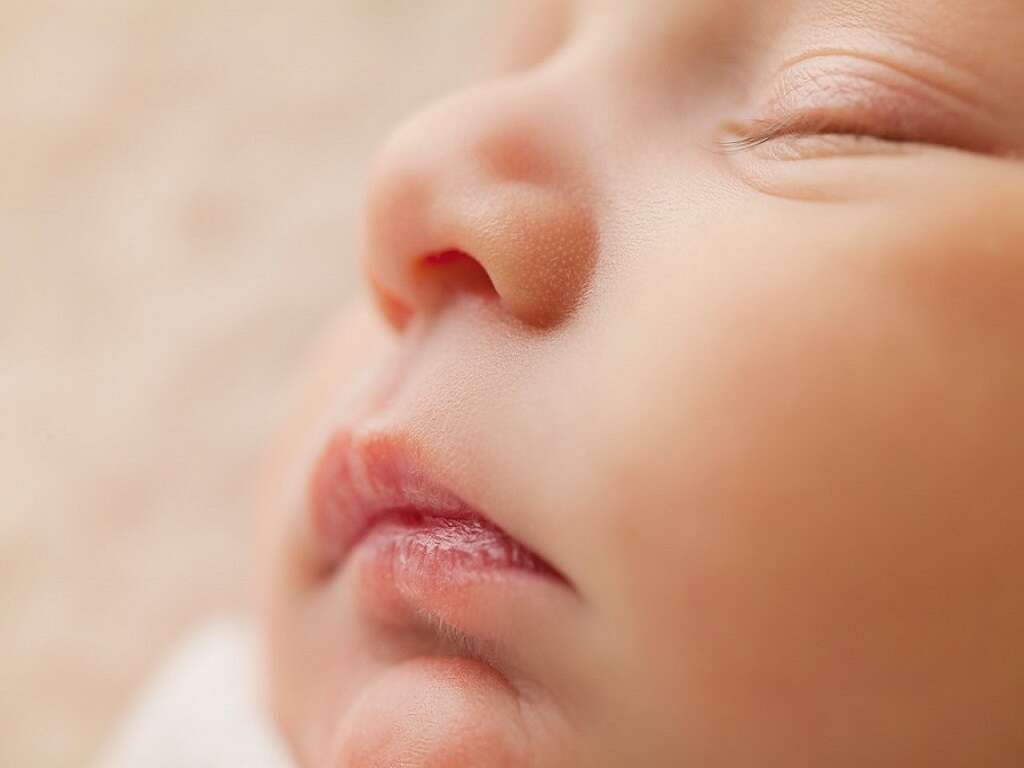Early Signs of Autism
 Article Sources
Article Sources
- 1. Martínez-Pedraza, Frances de L., and Alice S Carter. “Autism spectrum disorders in young children.” Child and adolescent psychiatric clinics of North America vol. 18,3 (2009): 645-63. doi:10.1016/j.chc.2009.02.002
- 2. Ozonoff, Sally et al. “The onset of autism: patterns of symptom emergence in the first years of life.” Autism research : official journal of the International Society for Autism Research vol. 1,6 (2008): 320-8. doi:10.1002/aur.53
- 3. Webb, Sara Jane, and Emily J H Jones. “Early Identification of Autism: Early Characteristics, Onset of Symptoms, and Diagnostic Stability.” Infants and young children vol. 22,2 (2009): 100-118. doi:10.1097/IYC.0b013e3181a02f7f
Autism Spectrum Disorder (ASD) is a developmental disorder that typically includes a combination of abnormalities in: how the brain processes and learns, language, communication, socialization and emotions, behavior, and sensory sensitivities. It is important to spot the signs of Autism so that treatment can begin early in order to avoid long term complications.1Martínez-Pedraza, Frances de L., and Alice S Carter. “Autism spectrum disorders in young children.” Child and adolescent psychiatric clinics of North America vol. 18,3 (2009): 645-63. doi:10.1016/j.chc.2009.02.002 Treatment should begin with a suspicion of Autism and not wait for a diagnosis.2Ozonoff, Sally et al. “The onset of autism: patterns of symptom emergence in the first years of life.” Autism research : official journal of the International Society for Autism Research vol. 1,6 (2008): 320-8. doi:10.1002/aur.53
Using a variety of tools, formal screening is performed at ages 18 months and 24 months but some children can be identified before this.2Ozonoff, Sally et al. “The onset of autism: patterns of symptom emergence in the first years of life.” Autism research : official journal of the International Society for Autism Research vol. 1,6 (2008): 320-8. doi:10.1002/aur.53 A diagnosis made at age 2 or 3 is usually more definite.3Webb, Sara Jane, and Emily J H Jones. “Early Identification of Autism: Early Characteristics, Onset of Symptoms, and Diagnostic Stability.” Infants and young children vol. 22,2 (2009): 100-118. doi:10.1097/IYC.0b013e3181a02f7f Autism is a tough diagnosis to make because of the variations in how children develop. Let your pediatrician know if you suspect Autism and perhaps request to see a specialist.

1. Social Skills
80-93% of those with Autism display difficulties with social interaction making it one of the stronger early identifiers for Autism.1Martínez-Pedraza, Frances de L., and Alice S Carter. “Autism spectrum disorders in young children.” Child and adolescent psychiatric clinics of North America vol. 18,3 (2009): 645-63. doi:10.1016/j.chc.2009.02.002 Infants will show difficulties with socialization by not making eye contact, not responding to people speaking, and making little to no effort in play or interaction. They also tend to smile less, to not have many facial expressions, and to not respond to touch. It has been shown that infants who do not respond to their names at the ages of 8-12 months may be diagnosed with Autism later in life; however, this is not an absolute indication of Autism.3Webb, Sara Jane, and Emily J H Jones. “Early Identification of Autism: Early Characteristics, Onset of Symptoms, and Diagnostic Stability.” Infants and young children vol. 22,2 (2009): 100-118. doi:10.1097/IYC.0b013e3181a02f7f
Social interactions of toddlers that may indicate Autism include limited attention or reaction to normal social happenings, faces, and voices along with less eye contact, and preference for isolation vs. social activities.3Webb, Sara Jane, and Emily J H Jones. “Early Identification of Autism: Early Characteristics, Onset of Symptoms, and Diagnostic Stability.” Infants and young children vol. 22,2 (2009): 100-118. doi:10.1097/IYC.0b013e3181a02f7f Other features that may be hindered include facial expressions, seeking a familiar adult to share an emotion, and also looking to where another person is looking.1Martínez-Pedraza, Frances de L., and Alice S Carter. “Autism spectrum disorders in young children.” Child and adolescent psychiatric clinics of North America vol. 18,3 (2009): 645-63. doi:10.1016/j.chc.2009.02.002

2. Communication and Language Skills
Similar to social skills, difficulties with communication affects 80-93% of those with Autism therefore making age appropriate communication another strong indicator.1Martínez-Pedraza, Frances de L., and Alice S Carter. “Autism spectrum disorders in young children.” Child and adolescent psychiatric clinics of North America vol. 18,3 (2009): 645-63. doi:10.1016/j.chc.2009.02.002 Infants communicate by using sounds and gestures. It has been found that infants who are later diagnosed with Autism have a delay in their ability to produce sounds and have a simplified version of babbling. They also tend to not point or look at objects of interest which is an important developmental sign of communication with another person.3Webb, Sara Jane, and Emily J H Jones. “Early Identification of Autism: Early Characteristics, Onset of Symptoms, and Diagnostic Stability.” Infants and young children vol. 22,2 (2009): 100-118. doi:10.1097/IYC.0b013e3181a02f7f
The development of spoken language will vary from child to child and so using language as a measure of whether or not a child has Autism can have its limitations. That being said, about 20-25% of children with Autism are nonverbal and others may not begin to speak until 18 months. Toddlers with Autism may also struggle to combine a gesture with words. Other signs include less imitation of others, limited showing of pleasure, and engagement in less complex and purposeful play. 3Webb, Sara Jane, and Emily J H Jones. “Early Identification of Autism: Early Characteristics, Onset of Symptoms, and Diagnostic Stability.” Infants and young children vol. 22,2 (2009): 100-118. doi:10.1097/IYC.0b013e3181a02f7f

3. Sensory Disorders
Typically, we are not bothered by the world’s many sensations thanks to a special part in our brain that helps to weed out what we need to and want to pay attention to. Those who experience a sensory disorder will be extra sensitive to certain sensations which can cause their brain to be overloaded with information. Sometimes, those with a sensory disorder will be described as sensory seeking where they want to experience a lot of that sensation, while others try to avoid that sensation all together.
Infants who are later diagnosed with Autism tend to gravitate towards activities that stimulate them. They may also begin to display signs of a sensory disorder where they seek either very high or very low sensory activities. Oftentimes, they will have a big response to sounds but very little response to something they see. This, however, may also just be an indication of a developmental delay.3Webb, Sara Jane, and Emily J H Jones. “Early Identification of Autism: Early Characteristics, Onset of Symptoms, and Diagnostic Stability.” Infants and young children vol. 22,2 (2009): 100-118. doi:10.1097/IYC.0b013e3181a02f7f

4. Visual Attention
Vision gives us a sense of what is around us. We tend to be able to look at objects and instantly know what it is, what it is for, its color, shape, etc., and typically will not look at it for very long. Also, when looking at an object, we tend to look at it straight on to get the best perspective of it.
Children with Autism will often display unusual ways to look at or inspect objects. This can be identified in babies as early as 6-12 months in age.2Ozonoff, Sally et al. “The onset of autism: patterns of symptom emergence in the first years of life.” Autism research : official journal of the International Society for Autism Research vol. 1,6 (2008): 320-8. doi:10.1002/aur.53 An infant may also show signs of Autism by taking a very long time to stare at or become oriented to an object.3Webb, Sara Jane, and Emily J H Jones. “Early Identification of Autism: Early Characteristics, Onset of Symptoms, and Diagnostic Stability.” Infants and young children vol. 22,2 (2009): 100-118. doi:10.1097/IYC.0b013e3181a02f7f An older child may use odd ways to study an object such as looking at it out of the corner of their eye.1Martínez-Pedraza, Frances de L., and Alice S Carter. “Autism spectrum disorders in young children.” Child and adolescent psychiatric clinics of North America vol. 18,3 (2009): 645-63. doi:10.1016/j.chc.2009.02.002

5. Head Circumference
The size of a baby’s head, also known as head circumference, is measured at every checkup appointment. The size is tracked and also compared to what the normal measurement is in the general population for babies that age. The size of the head and how quickly it grows can indicate certain illnesses.
The majority of the signs of Autism are behavioral, however, head circumference is one early indicator of Autism that is a physical sign. A head size that is small to normal in infancy, accelerated growth between 7-9 months, slowed growth rate at 12 months, and then by the ages of 2-4 has a large head size may indicate a future diagnosis of Autism.3Webb, Sara Jane, and Emily J H Jones. “Early Identification of Autism: Early Characteristics, Onset of Symptoms, and Diagnostic Stability.” Infants and young children vol. 22,2 (2009): 100-118. doi:10.1097/IYC.0b013e3181a02f7f

6. Motor Skills
Motor skills relates to how a person moves, balances, performs coordinated activities, manipulates objects, and uses their hands to do minute tasks. Motor skills can be categorized into gross motor skills (jumping, running, skipping, etc.) and fine motor skills (tying shoes, threading a needle, etc.).
It is thought that motor skills could be affected by an actual issue in the area of the brain that controls motor skills. It is also thought that a preference for isolation and poor social skills in children with Autism will cause the child to not participate and therefore decrease their practice of motor skills. Infants may display limited moving about, sometimes abnormal muscle tone, or abnormal postures or movements while toddlers and older will display more generalized motor skill issues.3Webb, Sara Jane, and Emily J H Jones. “Early Identification of Autism: Early Characteristics, Onset of Symptoms, and Diagnostic Stability.” Infants and young children vol. 22,2 (2009): 100-118. doi:10.1097/IYC.0b013e3181a02f7f

7. Regressions in Developmental Skills
Regression or a plateau in a skill could be seen in language as well as social and emotional behaviors. For some children with Autism, they do not show any abnormalities or changes in how they are developing; however, between 10-50% of those with Autism will at some point show a significant regression typically between months 19-21.3Webb, Sara Jane, and Emily J H Jones. “Early Identification of Autism: Early Characteristics, Onset of Symptoms, and Diagnostic Stability.” Infants and young children vol. 22,2 (2009): 100-118. doi:10.1097/IYC.0b013e3181a02f7f Language regressions are often seen at around 30 months.2Ozonoff, Sally et al. “The onset of autism: patterns of symptom emergence in the first years of life.” Autism research : official journal of the International Society for Autism Research vol. 1,6 (2008): 320-8. doi:10.1002/aur.53 Emergence of behavioral issues or repetitive behaviors often occur around the time of a regression.3Webb, Sara Jane, and Emily J H Jones. “Early Identification of Autism: Early Characteristics, Onset of Symptoms, and Diagnostic Stability.” Infants and young children vol. 22,2 (2009): 100-118. doi:10.1097/IYC.0b013e3181a02f7f
A regression in skills at 12 months of age, even with minimal behavioral indicators, can be quite common in babies with Autism. For this reason, screening for Autism should be done at 12 months, 18 months, and 24 months to increase the chances of early detection and treatment.2Ozonoff, Sally et al. “The onset of autism: patterns of symptom emergence in the first years of life.” Autism research : official journal of the International Society for Autism Research vol. 1,6 (2008): 320-8. doi:10.1002/aur.53

8. Temperament and Affect
Temperament describes how a person tends to naturally behave. Some people have a quiet and shy temperament while others may tend to have a loud and boisterous temperament. A person’s affect slightly differs from temperament in that it describes how a person shows the emotions they are feeling.
Temperaments in infants showing early signs of Autism may manifest as extreme passiveness or extreme irritability but ‘temperament-related behavioral problems” are typically first observed in toddlers.3Webb, Sara Jane, and Emily J H Jones. “Early Identification of Autism: Early Characteristics, Onset of Symptoms, and Diagnostic Stability.” Infants and young children vol. 22,2 (2009): 100-118. doi:10.1097/IYC.0b013e3181a02f7f Children with Autism may also have a flat affect.1Martínez-Pedraza, Frances de L., and Alice S Carter. “Autism spectrum disorders in young children.” Child and adolescent psychiatric clinics of North America vol. 18,3 (2009): 645-63. doi:10.1016/j.chc.2009.02.002 A flat affect describes a person who does not show signs of reaction or facial expressions to their emotions. For example, a person with a flat affect will have the same non-response to joy and sadness.

9. Preferences to an Object
We are exposed to many objects throughout our lives. To some people a mundane object could actually be something spectacular to another person. For example, a rock to a geologist could be exciting and worth exploring while the average person probably wouldn’t even care to look at. How we interact with objects around us can indicate certain behavioral markers including those for Autism.
Infants who are later diagnosed with ASD often will mouth objects more frequently than other babies.3Webb, Sara Jane, and Emily J H Jones. “Early Identification of Autism: Early Characteristics, Onset of Symptoms, and Diagnostic Stability.” Infants and young children vol. 22,2 (2009): 100-118. doi:10.1097/IYC.0b013e3181a02f7f Toddlers and older children may choose to play with or talk about only one object and they may want to play with it in the exact same way for prolonged periods of time.3Webb, Sara Jane, and Emily J H Jones. “Early Identification of Autism: Early Characteristics, Onset of Symptoms, and Diagnostic Stability.” Infants and young children vol. 22,2 (2009): 100-118. doi:10.1097/IYC.0b013e3181a02f7f

10. Repetitive Behaviors
A repetitive behavior includes any kind of movement, phrase, sound, etc. that is repeated over and over without apparent reason. Repetitive behaviors can include actions such as rocking, hand flapping, finger flicking, sound making, etc. Typically, repetitive behaviors are usually not the first sign of Autism and it is therefore more important to identify the earlier signs especially social and communication difficulties.1Martínez-Pedraza, Frances de L., and Alice S Carter. “Autism spectrum disorders in young children.” Child and adolescent psychiatric clinics of North America vol. 18,3 (2009): 645-63. doi:10.1016/j.chc.2009.02.002
Infants and toddlers will display repetitive behavior such as excessive and prolonged arm waving and rocking back and forth; however, this is found to be more of an observation vs concrete evidence of Autism.3Webb, Sara Jane, and Emily J H Jones. “Early Identification of Autism: Early Characteristics, Onset of Symptoms, and Diagnostic Stability.” Infants and young children vol. 22,2 (2009): 100-118. doi:10.1097/IYC.0b013e3181a02f7f











